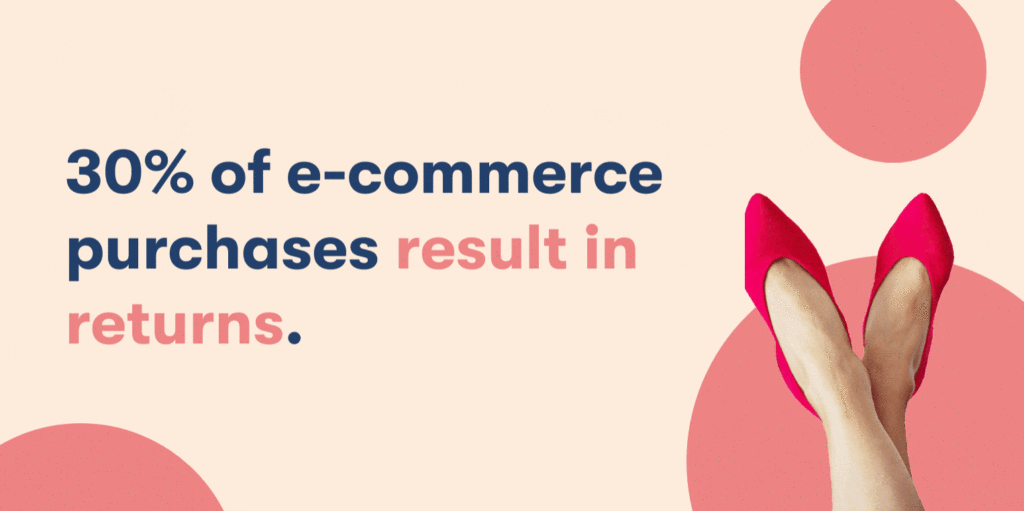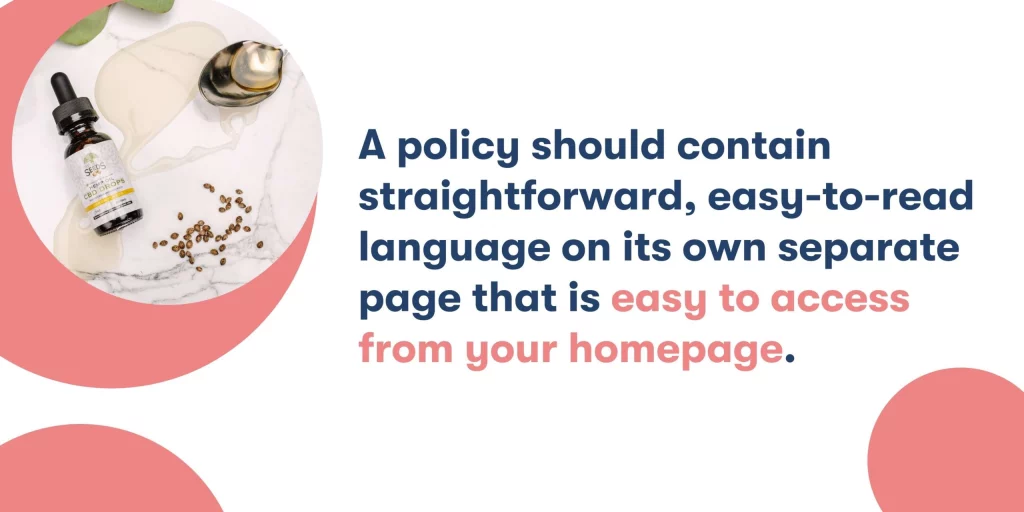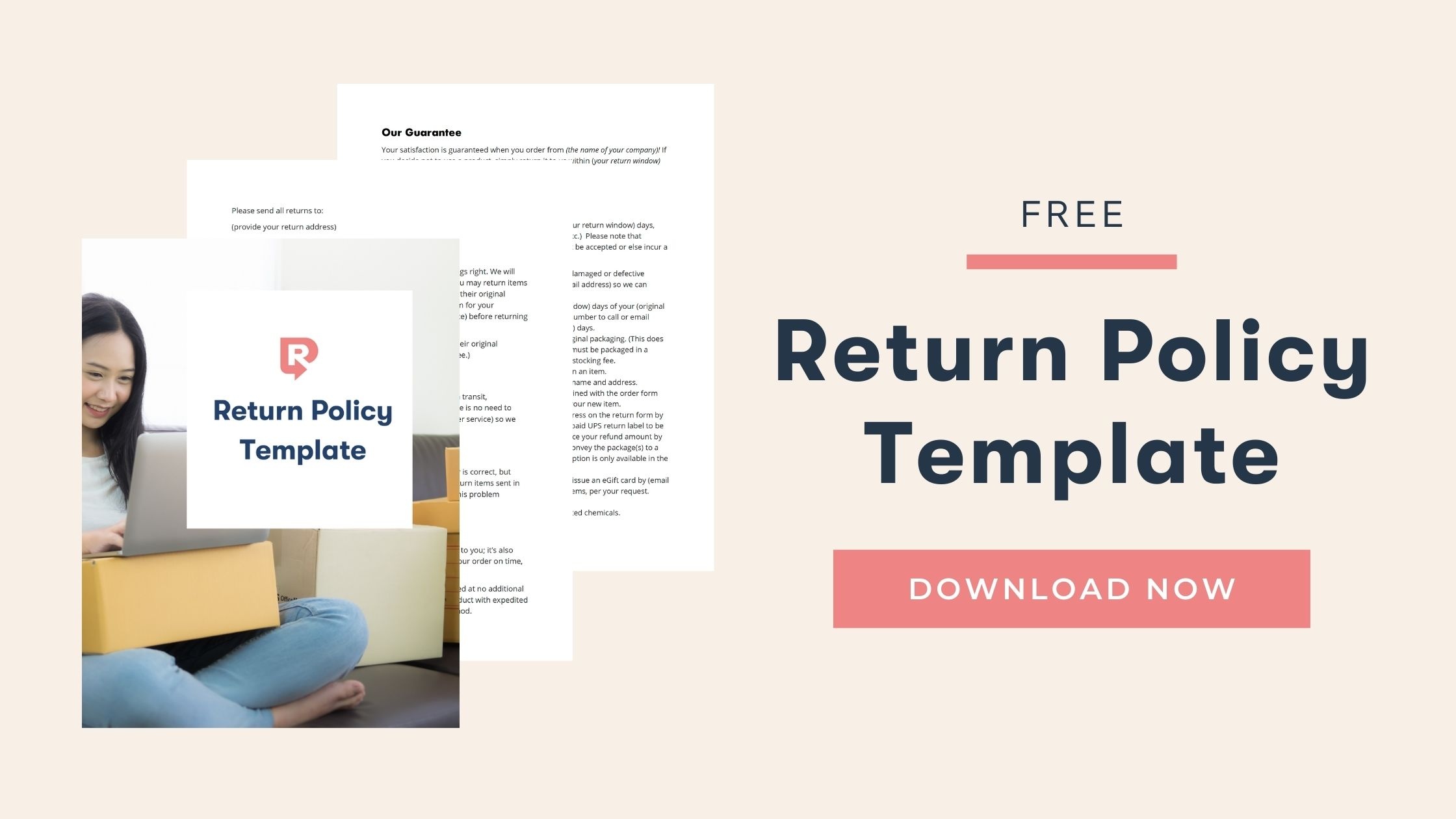How to Write an Ecommerce Return Policy (Free template included!)

Even with as much as 30% of E-commerce purchases resulting in returns, many businesses do not know how to construct an efficient and customer-friendly returns policy. Most companies see returns as a cost center and focus most of their time, energy, and money on preventing them rather than optimizing them. But, while returns are not the most glamorous department, a clear and deliberate policy surrounding them can improve almost every aspect of your business.
When making a return policy from scratch, it can be difficult to figure out where to start. That’s why we’ve compiled a template of staple areas that every return policy should include. This template will provide you with the basics, but it’s important to remember that there is no one-size-fits-all return policy. A good return policy tailors to the specific needs of your business, your customers, and the types of processed returns. That said, it’s important to include certain features in any return policy aimed at optimizing the customer experience and workflow efficiency.

How to Format a Return Policy
Before discussing what to include in a return policy, it is important to know how to format it. A return policy is no place to be vague; your return policy should be clear-cut and simple. The customer relationship is already at risk when a return is made. A deliberately confusing policy can completely sever ties between your business and the customer in this tenuous time. Thus, your policy should be as consumer-centric and user-friendly as possible.
A policy should contain straightforward, easy-to-read language on its own separate page that is easy to access from your e-commerce homepage. The webpage should prominently display a company logo to assure the customer that your business stands by this policy. The policy should begin with the most necessary details and descend to less immediate and more specific information.
Start by explaining your return window to let the customer know immediately if they can return their purchase. For customers who have products longer than the return window allows, including this feature at the front of your policy page will save them time. Customers with products that fall within the window will feel assured in proceeding.
Next, explain how the complete return process works. In this section, include how to package the item, what to include in the packaging, where and how to ship the item, and how long the customer should expect to wait until your company fully processes their return.
Once you inform the customer of how the return process works, you can discuss payment. There are multiple options for dealing with return shipping costs, which we will discuss later. Whatever option you chose, make sure the description is as straightforward as possible.
Finally, explain any exceptions to the previously stated rules. Perhaps some exchanges come with free shipping, while other types of returns do not. Maybe a certain promo is ineligible for returns. You should clearly outline specifics like these after the information listed above is covered.

How to Create Return Windows
Most return policies must prescribe a start and end date between which a customer can return a product. This period is called a return window, and without one, you could expose your company to a multitude of return issues. Items returned past a certain time after the original sale are more likely to be damaged or worn from use. Most likely, these items are rendered ineligible for resale. Including the time frame to submit a return in your policy will provide clear guidelines for processing returns.
You have a few options when constructing your return window. The first is deciding when your return window should start. Return windows generally start either at the point of sale or the point of delivery. The more liberal the return window, the more your consumers feel comfortable buying your products. Consumers would rather see a return window begin at the point of delivery – especially in today’s atmosphere where shipping delays can create an issue.
Next is deciding the length of your return window. Generally, e-commerce retailers have return windows between 30-60 days. Just as previously stated, a great return policy is all about pleasing the customer. You should factor in this line of thinking when constructing your return window. Recent studies have shown that – while counterintuitive – increasing your returns can boost sales and decrease returns in the long run. A flexible return policy encourages purchases from first-time buyers and increases customer loyalty. Customer loyalty directly improves your customer lifetime value which leads to more profit and less return risk of returns in the long run.
(Want to learn more about customer lifetime value (CLV)? Here is our free CLV calculator!)
How to Outline Return Shipping
Another crucial aspect of a return policy is outlining the process of shipping a returned item. Making this area unclear in your return policy can confuse customers and cause a logistical nightmare for backend employees who are managing returns. To avoid this, clearly explain what you require from the customer in the return process.
How should the item be shipped? Should the product be returned in its original packaging or one of similar dimensions? Is it necessary for the customer to include original product tags attached to the item or in the box? Return policies must clearly answer questions like these.
Next, clearly describe where to return an item. Was a return shipping label included in the original packaging? Does one need to be issued by the retailer? Or does one need to be made by the customer? If so, you should display the return address at this point in the policy.
Another area that needs to be covered is how to pay for return shipping. Shipping cost could come in the form of a fixed deduction in which a standard fee is subtracted from the total amount refunded. Your company could also manage the cost by paying for shipping and deducting the cost of shipping that item from the refund. You could also require the customer to pay for the shipping cost separately, and then issue the full refund amount upon return. In some situations, such as when a product is of no resale value, shipping is not necessary. Your policy should state such if that is the case.
Finally, your company could offer free returns, in which your company incurs all the cost of shipping. Free returns and exchanges are becoming standard in ecommerce. In fact, a National Retail Federation study found that about 59% of retailers currently offer free return shipping. This statistic does not mean your company must follow this trend, but it is important to be aware that customers expect free shipping on returns. Failing to meet customer expectations with your return policy can have a negative impact on your customer satisfaction and customer lifetime value. A loss in CLV can cost you more than to simply ship the return in the first place.
How to Outline Specific Returns
We already mentioned that you should tailor your return policy to the specific needs of your company. It is also important to tailor them to the specific needs of the return. Depending on the return type, reason, or item, your company may want to include return policy exceptions. For instance, many E-commerce retailers like to prioritize and incentivize exchanges instead of other forms of returns. Sometimes return policies offer free shipping on exchange items to do so. In this case, it would be wise to include this exception in your return policy to increase awareness of this fact.
Return policies can also be altered based on return reasons or based on the type of return item. For instance, if the return item has a warranty, or if the return is resulting from a manufacturing defect, your business may want to offer free return shipping for these items. Your business should also include this information in your return policy.
How to Process Third-Party Warranties
There is one last thing your e-commerce business will want to include in its return policy if you are selling products across multiple platforms: third-party warranties. When a customer makes a warranty claim on a product bought on a third-party site such as Amazon, they will have to go through your website to orchestrate a return. But most likely, your company has no record of the customer purchasing the product from the third-party. If your company isn’t prepared for these types of returns it can cause a logistical nightmare for your employees and an abysmal experience for your customer. This is why your return policy must explain how third-party warranties are processed, so your employees and customers are prepared and satisfied. ReturnLogic allows direct third-party returns on your website. Schedule a demo to learn more.
With as many as 67% of shoppers visiting your returns page before making a purchase, and around 73% of shoppers basing future purchase decisions off past returns experiences according to UPS, your E-commerce business can’t afford anything less than a fully optimized and outlined return policy. Your return page is the last chance you have to save a customer-business relationship before a return is issued, and sometimes the first thing your customer sees before deciding to make a purchase. Shouldn’t your company start treating its return policy with the care it deserves?







